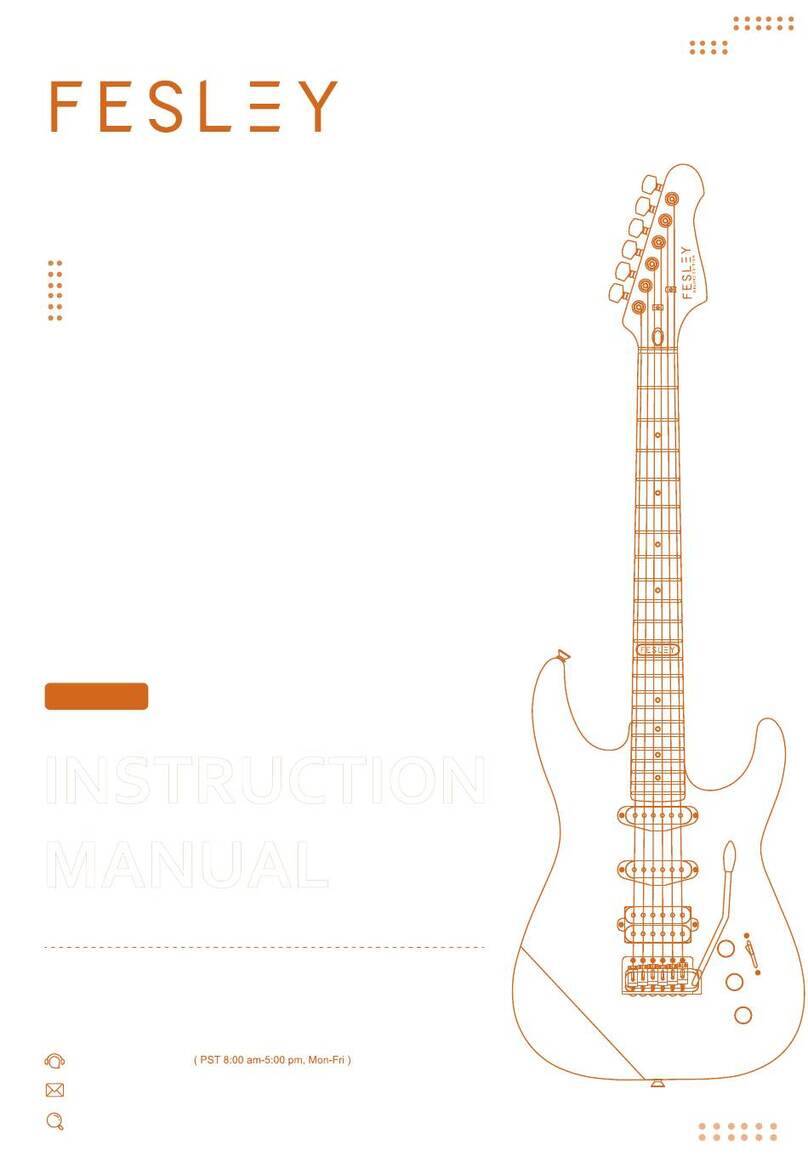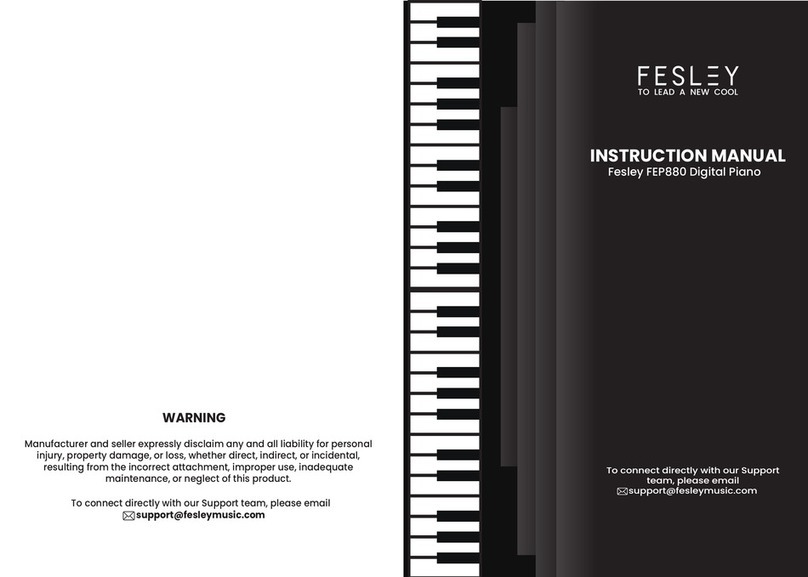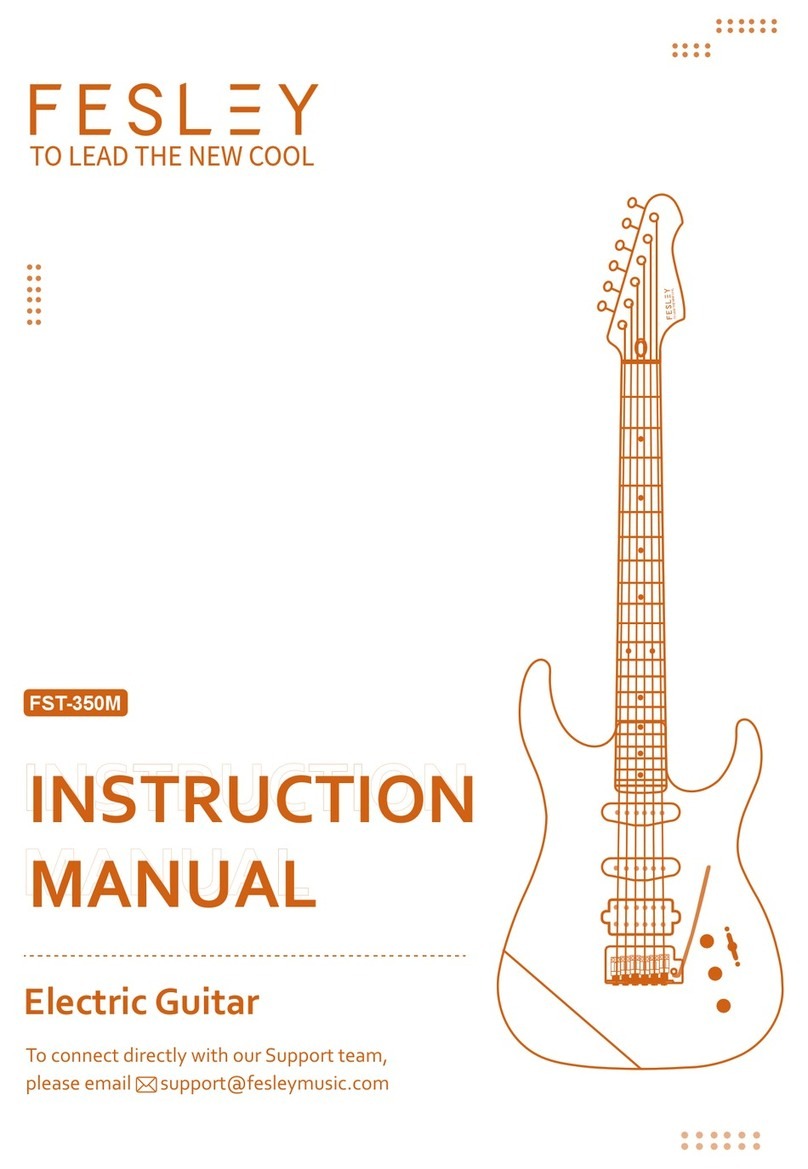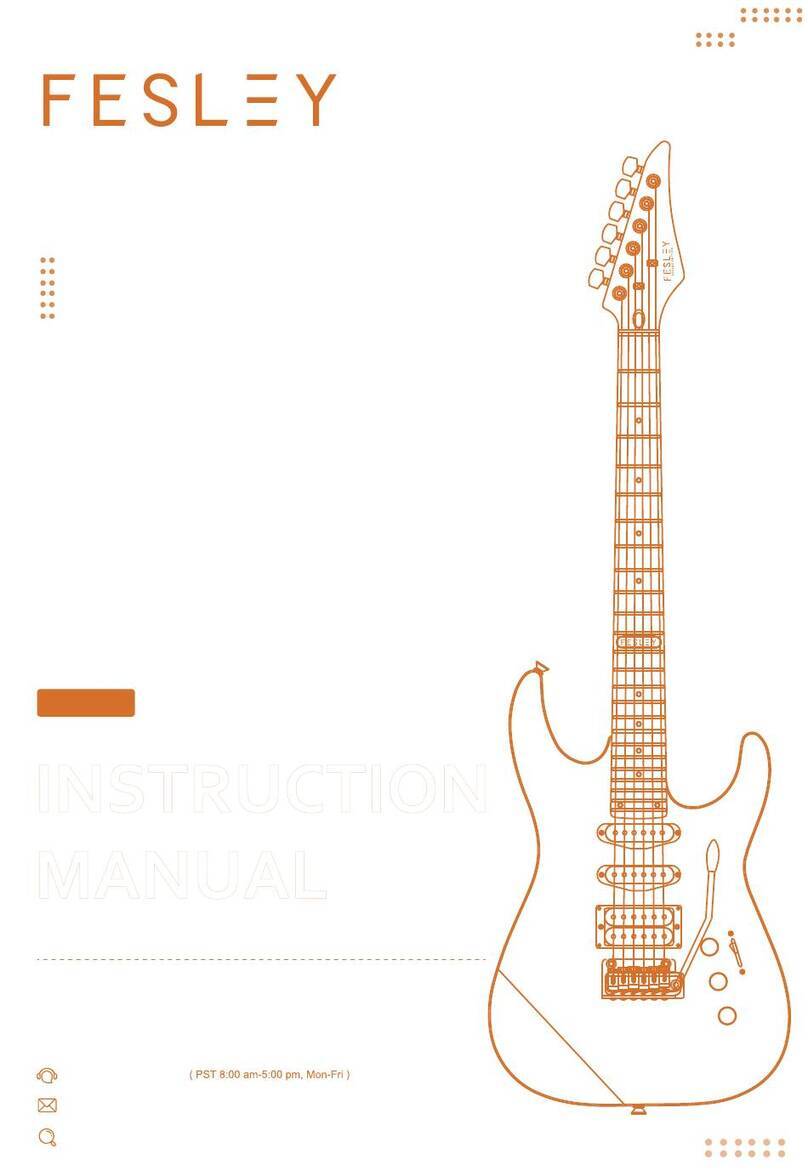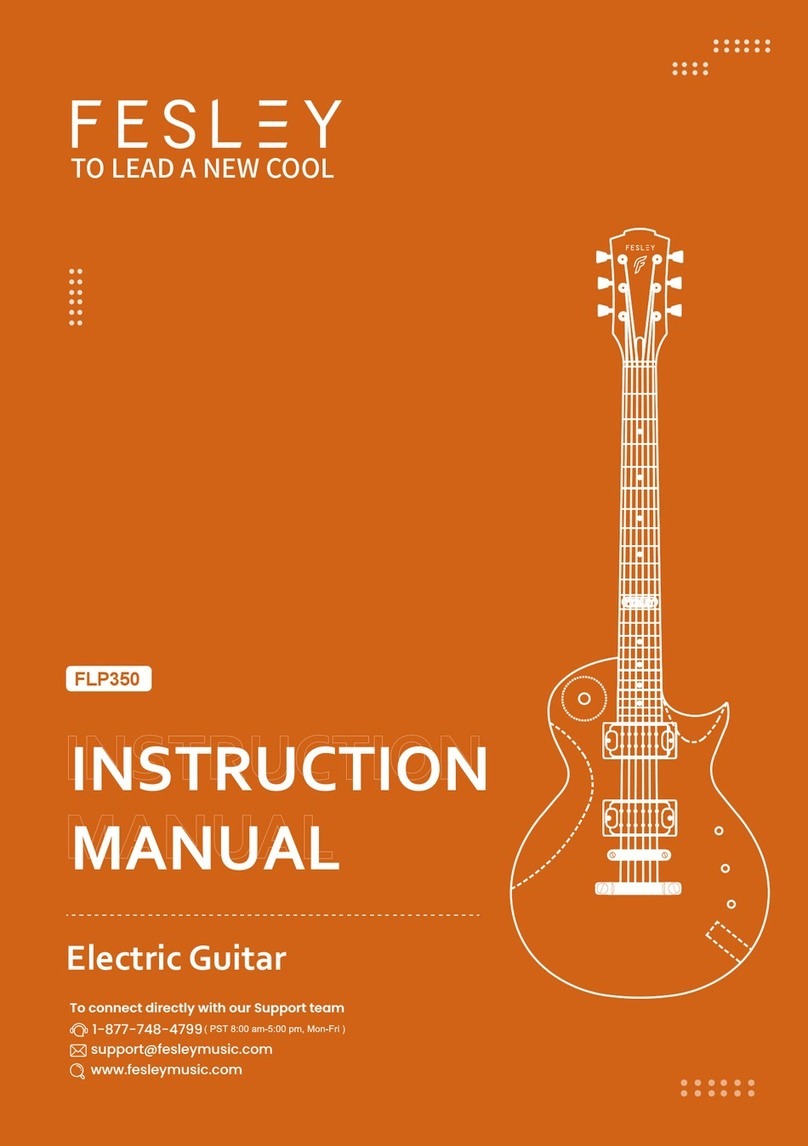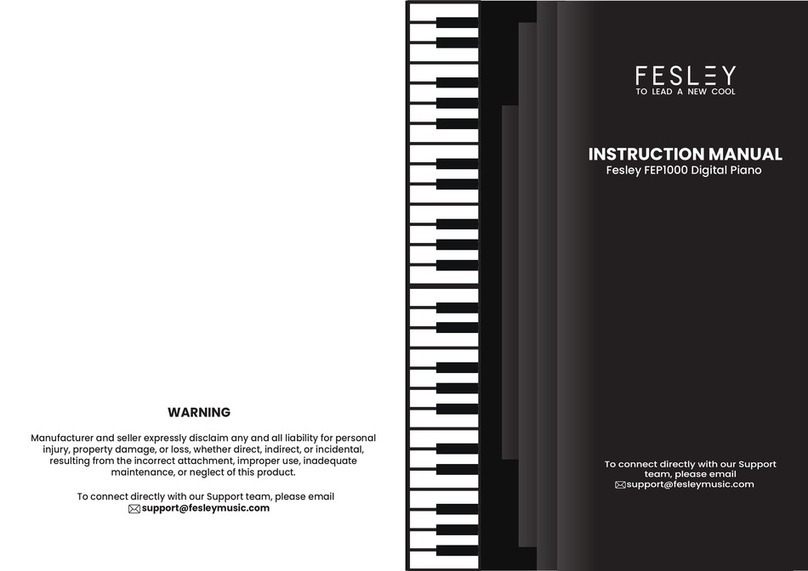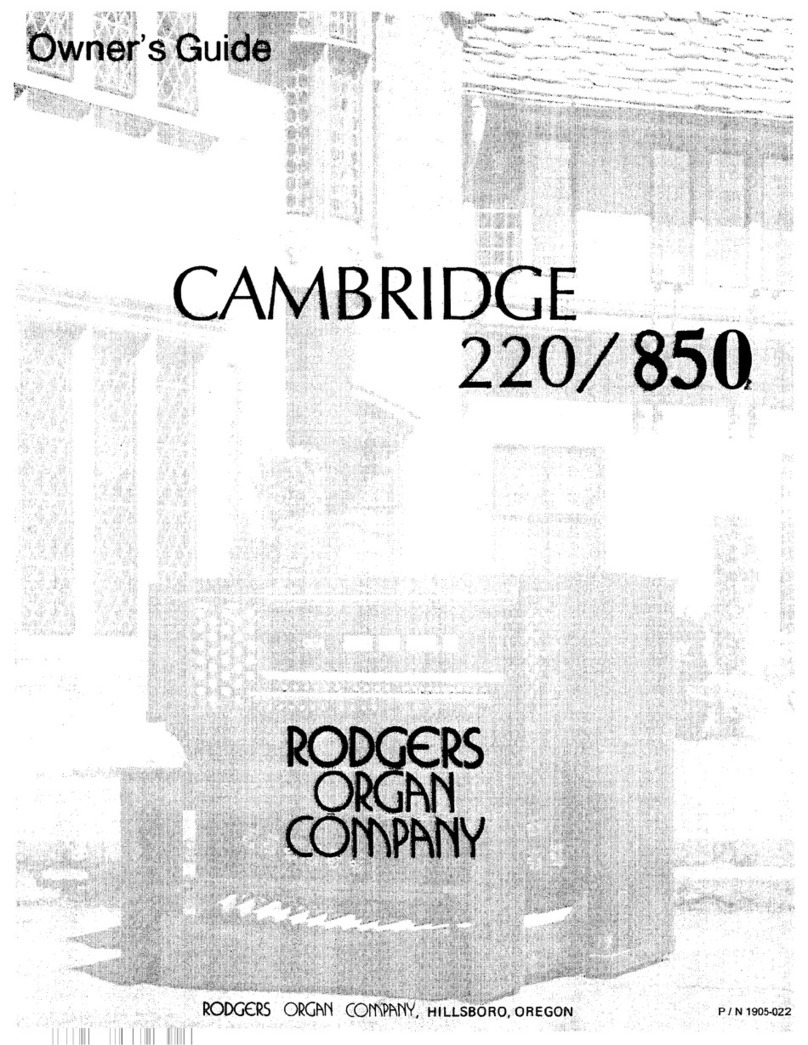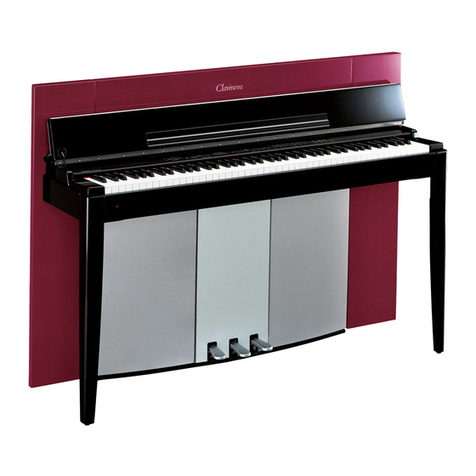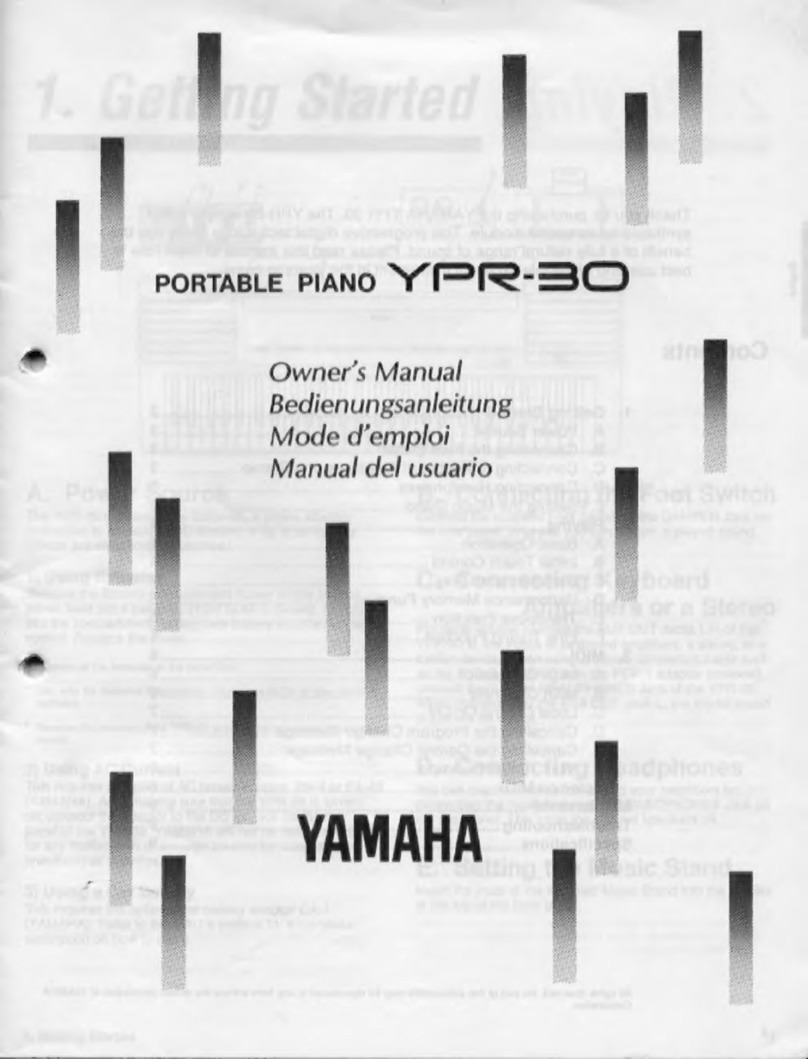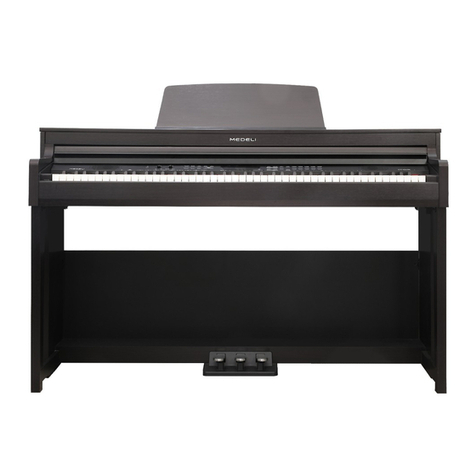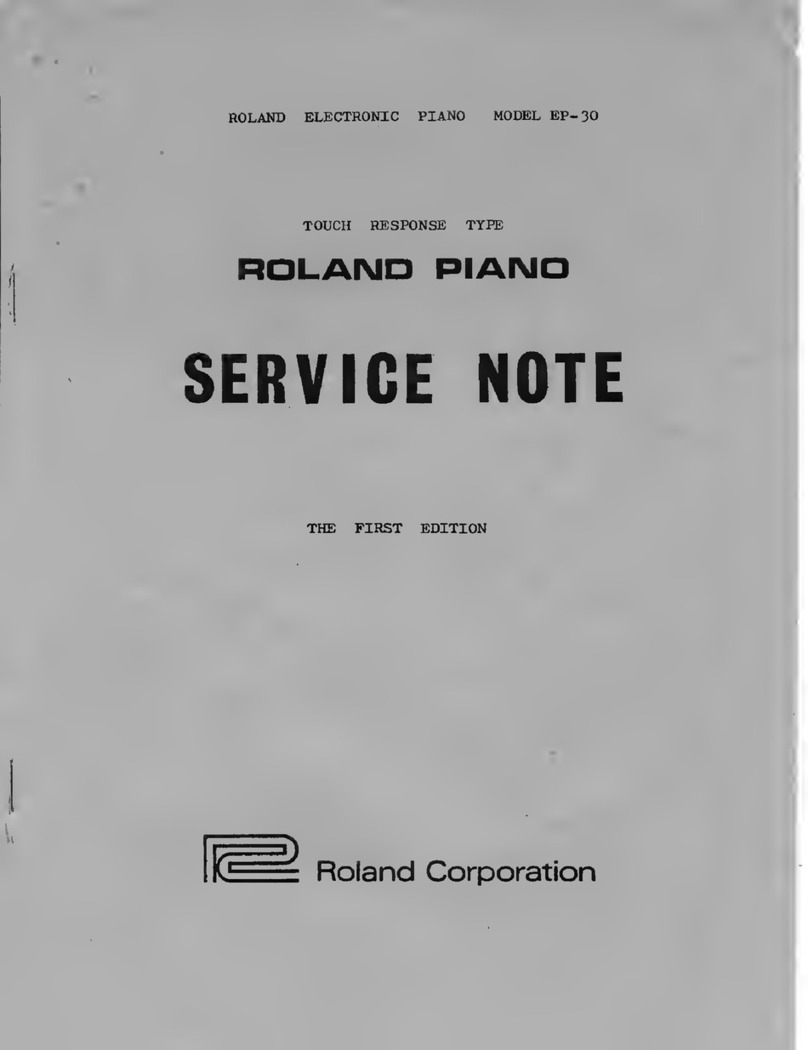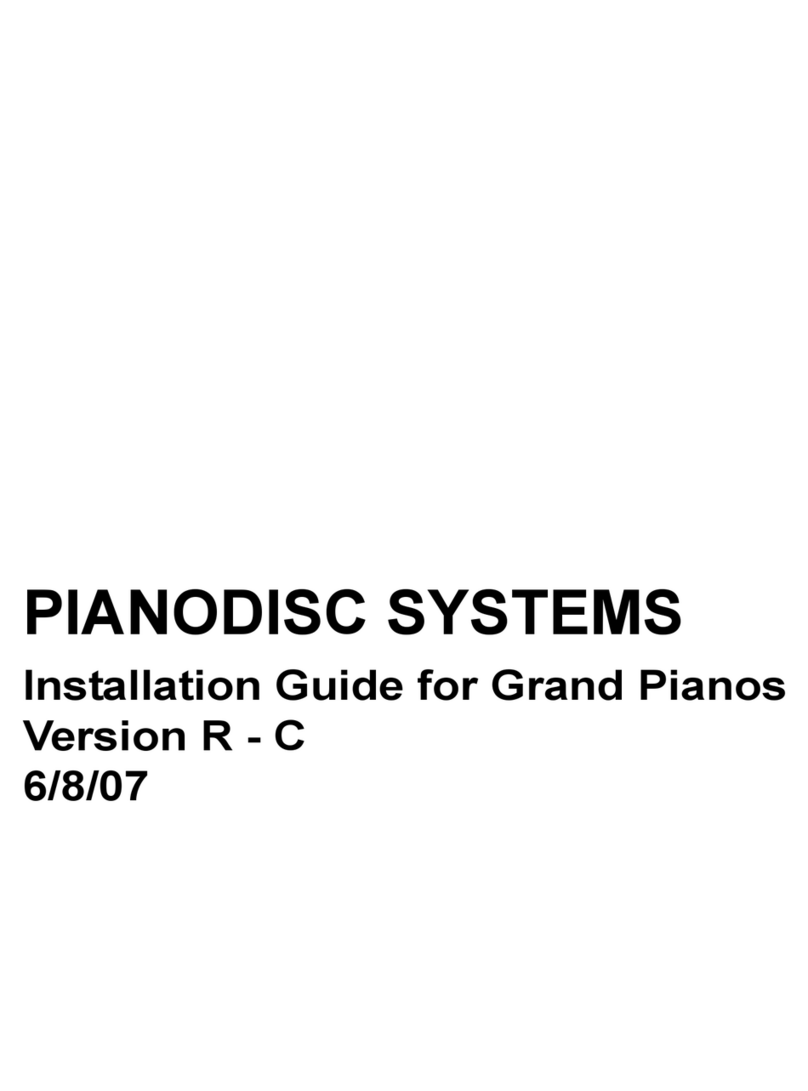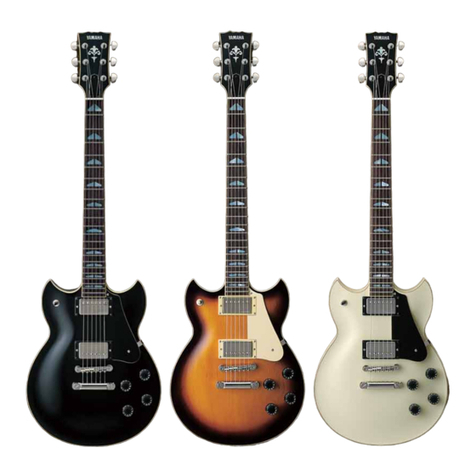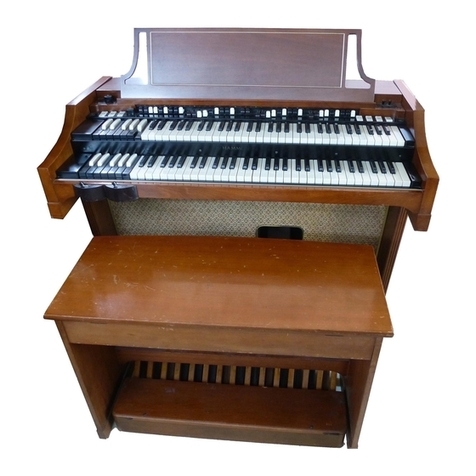FESLEY FDET280 User manual

INSTRUCTION
MANUAL
FDET280 FDET280C
12-String Acoustic-Electric Guitar
To connect directly with our Support team, please email [email protected]

Thank you for purchasing the Fesley 12-String
Guitar. In order to get the best performance
and enjoy more fun with the Fesley guitar, it is
strongly recommended that you read this
instruction before using it. Please store this
instruction in a safe place for future reference.

GUITAR
(EQUALIZER BUILT-IN TUNER)
1 SET
EXTRA STRINGS
1 PC
STRAP
PARTS
4 PCS
GUITAR PICK
CARRYING CASE 1PC
TOOLS REQUIRED
1 PC
CAPO
1 PC
PICK GUARD
ALLEN WRENCH
(PROVIDED) 9V BATTERY
(PROVIDED)
1 PC
CLEANING CLOTH
3

Please retain these instructions for future reference.
DIAGRAM
EQUALIZER
1. Tuning Pegs
2. Tuning Machine
3. Headstock/Head
4. Neck
5. String
6. Fret
7. Pick Guard: Remove
backing and adhere
8. Bridge
9. Saddle
10. Bridge Pins
11. Equalizer
12.Output Jack &
9V Battery
1.Tuner: Turn on/off the built-in tuner
4.Batt: Low battery indicator light 3.Pres (presence): Adjust the
fullness of
the sound by manipulating
high end frequencies
2.The display of the tuner
23456
78
9
10
11
1
12
4

CAPO
TUNING STRINGS
Dust and other foreign matter can harm the quality of your guitar. Make sure to regularly clean and
maintain your guitar, including around the tuning pegs and bridge. To clean your guitar, use a dry,
soft cloth. If desired, guitar polish can be bought from any local music store. Do not leave your guitar
exposed to the sunlight or elements, and be aware that guitars are made of wood and are therefore
sensitive to changes in temperature, humidity, and altitude.
GUITAR CARE
1. Plug one end of the part G ¼” cable into the guitar and plug the other end into the input of an
amplifier.
2.Turn amplifier on and adjust sound according to your preference.
3. Attention: If the battery in the guitar is dead, the amplifier will not have any sound.
OPERATING INSTRUCTIONS
1. Install a 9-volt battery in the battery compartment.
2. Turn the tuner on and tune the guitar strings accordingly.
- Standard tuning is as follows (low to high): E, A, D, G, B, E
Attention: If the battery in the guitar is dead, the amplifier will not have any sound.
5

CHANGING STRINGS
Replacing guitar strings can remedy many problems involving poor sound. All strings can be changed
at once or strings can be changed individually. To change a guitar string, the old string should be
completely removed before attaching the new string. After the new string is attached, the guitar will
need to be re-tuned.
GUITAR STRING MAINTENANCE
Installing New Strings:
1.Remove the bridge pin of your guitar. Bridge pins can stick to the guitar, and may take some time
to get off;the edge of peg winder (available at any local music store) can be used to help.locate the
proper string to replace your old string. Then, from the end of the string that does NOT have a ball
at the end,feed the string through the bridge via the open hole exposed by removing
4. Begin to tune the string by winding the tuning peg until the desired sound is produced. After
reaching the desired tone, pull the string lightly. The string will go slightly out of tune. Readjust the
tuning peg until receiving the desired tone again. Repeat the process a few more times. This will
ensure that your string will stay in tune while playing.
5. You may cut off the excess string,but it is important to leave some excess still attached(about
¼-1inch) in case the guitar string needs to be restrung again.Remember,it is easy to cut more off
later,but impossible to add string back.
Removing Old Strings:
1. To remove a guitar string, find the tuning peg and tuning machine that the string is attached to.
Loosen the string by winding the tuning peg until the string has no tension.
2. Continue to wind the string loose until the string can be pulled loose from the top. The strings can
be pulled out via the bridge at the bottom of the guitar.
3. If you do not wish to use the old string again, you can cut the string near the middle of the strings
viawire cutters. If you choose to do this, be careful and hold the string securely next to the cut;
otherwise,the string will pop up and can potentially harm you.
the pin. Then, press the bridge pin back into place
gently with the slot facing forward, and while holding
your finger on the pin,run the string through until the
ball on the end of the string is flush to the bottom of
the pin.
2. Secure the string to the headstock via the tuning
machine. To do so, make sure the eye/hole of the
tuning machine is parallel to the neck/headstock of
the guitar. Feed the string through the eye of the
tuning machine and pull the string fairly taut. The
string should have a bit of slack (about 1-2 inches).
3. While holding the string taut, secure it to the tuning
machine by turning the corresponding tuning peg to
wrap the string around. For extra
security, route the string through itself on the initial wrap around (see diagram). - For treble strings
(G,B,E), wind the strings clockwise. For bass strings (E, A, D), wind the strings counter-clockwise.
6

1.Locate the tension rod on the base of the neck under the strings.
2.Use Allen wrench to loosen/tighten the tension of the guitar neck.
ADJUST NECK TENSION
7

Manufacturer and seller expressly disclaim any and all liability for personal
injury, property damage or loss, whether direct, indirect, or incidental, result-
ing from the incorrect attachment, improper use, inadequate maintenance, or
neglect of this product.
HELP CENTER
PRODUCT WARRANTY INFORMATION
All items can be returned for any reason within 60 days of the receipt and will receive
a full refund as long as the item is returned in its original product packaging and all
accessories from its original shipment are included. All returned items will receive a
full refund back to the original payment method. All returned items will not be
charged a re-stocking fee.
Pictures may be required for some returns to ensure an item is not damaged prior to
its return. Items returned are not considered undamaged until they are received by
Fesley and verified as such. All damages to items are the customer’s responsibility
until the item has been received by and acknowledged by Fesley as undamaged.
WARNING
To connect directly with our Support team,
8
This manual suits for next models
1
Table of contents
Other FESLEY Musical Instrument manuals
